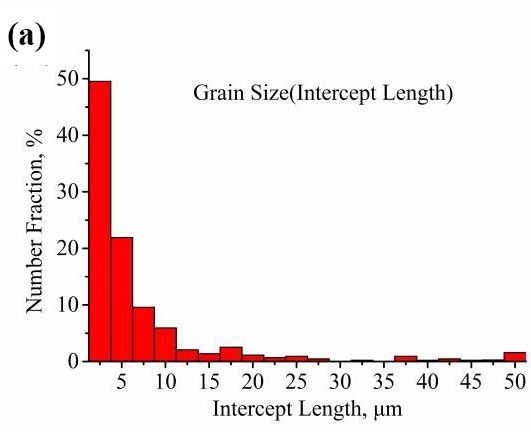
利用粉末冶金法制得了板型规整的纯钼烧结坯,在Gleeble-1500型热模拟实验机上对纯钼板坯进行热压缩变形实验,变形温度为1100°C~1300 °C、变形速率为0.01~10 s-1、真应变为0.3~0.6。将线切割得到的截面试样使用金相镶样机进行镶嵌,先用粗砂纸打磨至表面平整、无明显切割痕迹,然后使用不同粒度金相砂纸打磨、机械抛光至表面光洁无明显划痕。使用Murakami腐蚀剂(铁氰化钾:氢氧化钠:水为1:1:10)腐蚀60 s左右,腐蚀之后用酒精擦洗吹干,利用电子背散射衍射(EBSD)技术分析变形后纯钼微观组织、再结晶晶粒、大小角度晶界和取向角等变化。将样品在电压为20 V,温度为20 °C,电解液为H2SO4: CH3OH为12: 88的混合溶液电解抛光。
A pure molybdenum sintered compact with a regular plate shape was prepared by powder metallurgy. The pure molybdenum slab was subjected to thermal compression deformation experiments on the Gleeble-1500 thermal simulation test machine. The deformation temperature was 1100°C~1300°C, and the deformation rate was 0.01~ 10 s-1, the true strain is 0.3 to 0.6. The cross-section samples obtained by wire cutting are inlaid with a metallographic inlay machine, first polished with coarse sandpaper until the surface is smooth without obvious cutting marks, and then polished with metallographic sandpaper of different particle sizes and mechanically polished until the surface is smooth and without obvious scratches. Use Murakami etchant (potassium ferricyanide: sodium hydroxide: water 1:1:10) to corrode for about 60 s. After corrosion, use alcohol to scrub and blow dry, and use electron backscatter diffraction (EBSD) technology to analyze the microstructure of pure molybdenum after deformation , Recrystallized grains, size and angle of grain boundaries and orientation angle changes. The sample was electropolished at a voltage of 20 V, a temperature of 20 °C, and a 12:88 mixed solution of H2SO4: CH3OH as the electrolyte.